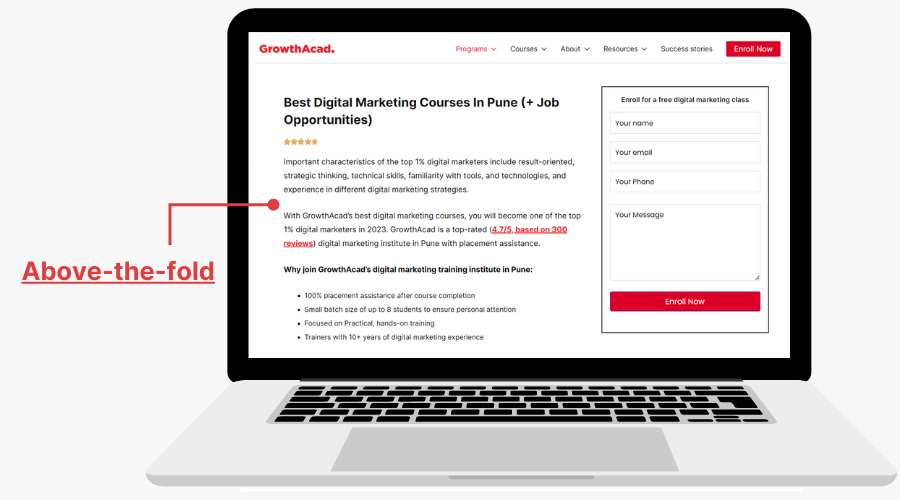What is a landing page?
A digital marketing landing page is designed to generate business leads, drive conversions, and increase sales. A typical landing page has pre-defined goals (say, generating email signups, product demos, app installations, etc.) and clear call-to-action. A landing page is also known as a squeeze page, lead capture page, conversion page, etc.
Here’s a landing page example optimized for email lead generation:

How does a landing page work in digital marketing?
When brands sell a product or service or want to generate leads for their business, they prefer creating a landing page with clear call-to-actions. This helps them target a specific group of audience with relevant offers and personalized information.
For example, if a brand wants to increase its email subscribers list, they may create a landing page with free resources such as PDF, template, checklist, etc.
These free resources will encourage visitors to complete the form and join the newsletter. In marketing, resources designed to capture leads are called lead magnets.
Key elements of a high-converting landing page:
- Conversion optimized above the fold section

- Social proofs
- Clear CTAs throughout the page
- Fast loading page
- Minimal distractions (remove header, footer, and sidebar links)
- Clear and concise copy
- Mobile-friendly and responsive design
What is the purpose of a landing page?
The purpose of a landing page depends on the business’s end goals. Here are some common purposes:
- Lead generation
- Product demos and installations
- Growing email subscriber lists
- Registering people for the product-pre-launch event
- Increase sales
- Testing and optimization to find the winning landing page copy and design.
What is the difference between a website and a landing page?
Here are the key differences between a website and a landing page in digital marketing:
| Metric | Websites | Landing Pages |
| Purpose | Increase online presence, brand awareness, etc. | Single-focused goal |
| Navigation | Multiple pages with navigation (header, footer, sidebars, etc.) | Minimal distractions with no navigation |
| Content | Various informational pages | Concise and persuasive content written to encourage visitors perform desired actions |
| Design | Consistent branding | Tailored to audience profile, traffic source, and buyers’ stage. |
| Traffic Source | Various sources (direct, search, referrals, etc.) | Specific traffic sources (ad campaigns, email marketing, etc.) |
| Conversion Tracking | Broad analytics across the website | Specific metrics for conversions, bounce rate, engagement, etc. |
| Optimization | Overall website performance | Conversion rate optimization (above-the-fold section, CTAs, page speed, etc.) |
Learn about other digital marketing glossary terms and their significance.
